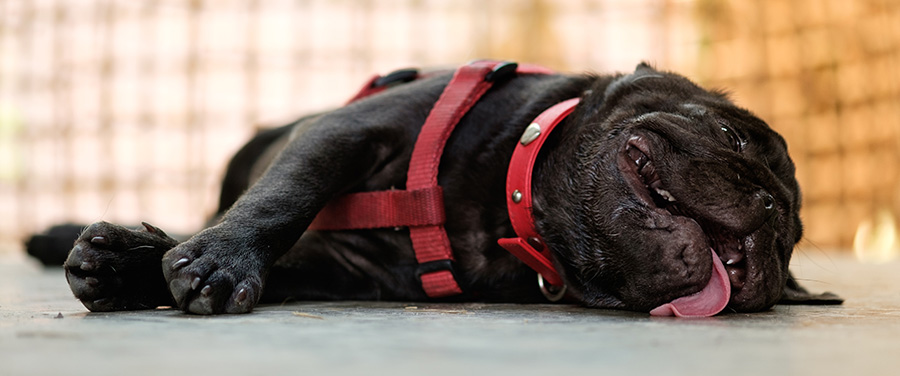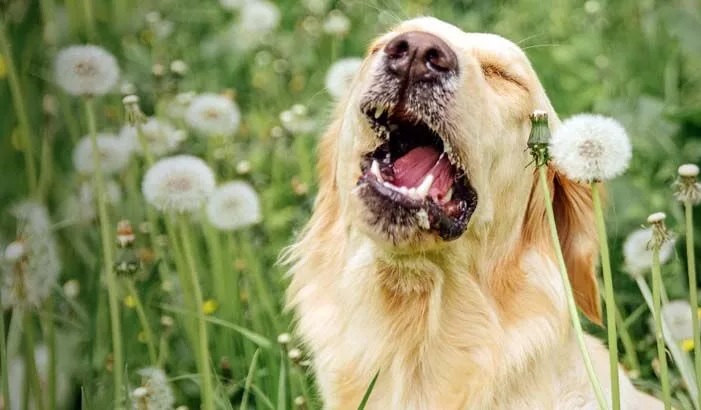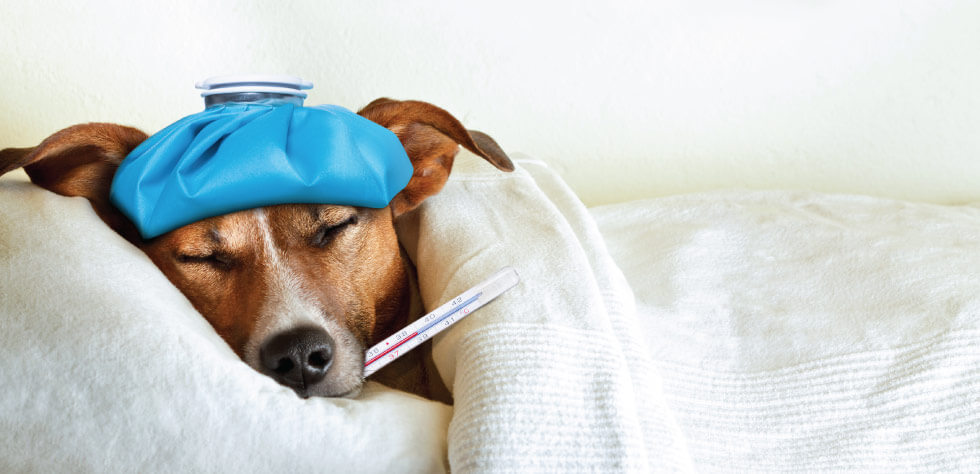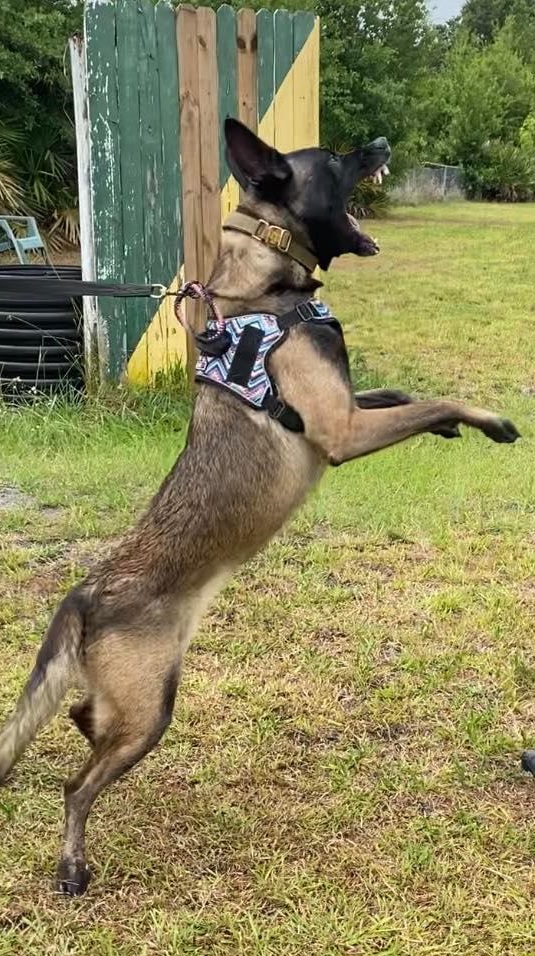Posts Tagged: dogs
Heatstroke in your pet!
By Dr. Maria Krenz, DVM – ZimmVet-763-856-4848

When a dog’s internal body temperature is above 105 degrees F, the dog may be suffering from heatstroke. Dogs have only a couple of ways to cool off—blood vessel expansion and panting. When dogs pant, they evaporate moisture from their tongues, nasal passages, and the lining of their lungs, and this cools them down as air passes over the moist tissue. They also cool off via vasodilation. Blood vessels, especially in the ears and face, expand, bringing overheated blood closer to the surface to cool down.
Signs of Heat Stroke
Heat Stroke in pets! Heatstroke in dogs is life-threatening and can also result in very serious complications. Recognizing early signs of heatstroke may help you remedy the condition before things get too serious. Early signs of heatstroke include:
- Heavy Panting
- Rapid Breathing
- Excessive Drooling
- Dry Mucous Membranes
- Bright red gums and tongue
- Skin that is hot to the touch
- High Heart Rate
Affected dogs become hyperactive and may have difficulty maintaining balance. As exposure to excessive heat goes on, the dog’s condition worsens and includes signs of shock, pale mucous membranes with white or blue gums, a very rapid heart rate, and a drop in blood pressure. The dog hyperventilates, and dehydration becomes more severe. Pupils dilate, the pulse becomes more irregular, and the dog has muscle tremors. They may become lethargic and unwilling to move, urinate or defecate uncontrollably, collapse, and become comatose.
Why Does Heat Stroke Occur?
Heatstroke generally occurs during the hottest part of the year, especially when it is humid. Contributing factors include: breed, age, physical fitness, if a pet is overweight, medical disorders and being in closed conditions such as a car.
How to Treat Heatstroke
Heatstroke therapy involves immediately trying to lower the dog’s body temperature. If you notice signs of heatstroke in your dog, it’s critical to stop any activity and help your dog cool down by:
- Walking or carrying the dog to a well-ventilated, cool area.
- Spraying or sponging the dog with cool (not cold) or tepid water, especially on the underside. Do not immerse the animal in cold water.
- Using a fan to blow cool air on them.
If at home cooling does not bring your dog’s body temperature below 103 degrees bring your dog to your veterinarian or local pet emergency clinic. Severely affected dogs require fluids, medication, support, and oxygen. Complications may not occur immediately, so it’s important to let your veterinarian determine the type of follow-up treatment required.
Conclusion
Heatstroke in Pets! Immediate action and correct treatment are so important because they can mean the difference between a swift and complete recovery and long-term complications.
Always provide plenty of cool fresh water, shade, and frequent rest periods when it’s hot. And never leave your dog in the car.
Please visit the AAHA website at https://www.aaha.org/your-pet/pet-owner-education/ask-aaha/how-can-i-prevent-heatstroke-in-my-pet/ for more information. More information on heatstroke and summer fun with your pet please visit our other blog post https://www.zimmvet.com/blog/wp-admin/post.php?post=885&action=edit.
Allergies in Pets
By Dr. Maria Krenz, DVM – Zimmvet (763)856-4848

Allergies in Pets
Imagine that you have burning eyes, itchy skin or hair loss, but without the ability to talk. Just like people, many pets suffer from allergies. If you have owned a pet with allergies, you know the common signs: skin redness, scratching, licking, chewing at the skin, ear and skin infections, hair loss, excessive paw licking among others. Pet allergies are a medical condition that requires lifelong management to control the symptoms. Some pets only have seasonal allergies, such as spring time, and need to start treatment prior to when allergy signs begin for best management.
Types of Allergies
- Atopic Dermatitis (Atopy) – Inhalation of pollens, molds and other things in the environment.
- Atopy is seasonal, one of the most common triggers in the spring time is Tree Pollen.
- Food Allergies – Allergies to certain foods such as chicken, beef, or pork.
Treatment Options
Pets that suffer from Spring allergies need to start treatment to manage the symptoms as soon as it starts getting warm. It is best to work with your veterinarian to create a plan that is best for your pet. Common treatments include the following.
- Antihistamines: Benadryl is a common medication used to control allergies. Speak to your veterinarian about how much and how often you can give your pet Benadryl. Other antihistamines include cetirizine, hydroxyzine and others.
- Shampoos: Often, pets with allergies have a poor skin barrier, which allows more allergens to get into the body. Bathing is usually needed at least every 2-3 days. Make sure you have shampoo that is made to help with itchy skin and allergies!
- Omega Fatty Acid Supplements: These supplements are a natural anti-inflammatory agent, and can help reduce itching and help with general skin health.
- Dermaquin: This product is a natural supplement that comes in a form as a soft chew. Dermaquin helps strengthen the skin barrier which decreases a pet’s allergic response.
- Apoquel: This is a very effective allergy medication. Apoquel directly affects the molecule that causes itch and inflammation in dogs. Apoquel is a tablet medication that is given daily.
- Cytopoint: This allergy treatment is an injection. The effects last about 4-8 weeks. Its mechanism is interrupting the pathway that causes itch and inflammation in dogs.
- Allergy treatments for food can include things such as changing the diet your pet is on.
Speak with your Veterinarian
Allergies can be a very frustrating condition for pet owners. Your veterinarian is here to help find the best treatment for your pet. Often, pets with allergies develop secondary bacterial and fungal skin infections that need to be treated with oral and topical medication. Ear infections are also common secondary condition that would needed prescription medication. For tough cases, your normal veterinarian may refer you to a veterinary dermatologist (skin specialist). Visit this website for more information https://vcahospitals.com/know-your-pet/allergy-general-in-dogs. If your pet is fearful of going into the clinic please visit this website for tips on how to make them more comfortable https://www.zimmvet.com/blog/successful-veterinary-visits/.
Disclaimer: This written content is meant to be educational and is not medical advice. Always consult a veterinarian about medical advice for your pet.
Canine Influenza
By Dr. Maria Krenz, DVM – ZimmVet-763-856-4848

Canine influenza, or dog flu, has been in the news on and off when outbreaks occur. Recently there was an out break in the Minneapolis, Minnesota area that affected many. Make sure your dog is protected from the flu with the Canine Influenza Vaccination.
Spread of Dog Flu
Dog Flu is spread by direct dog-to-dog contact. The secretions from infected dogs coughing and sneezing can stay on objects and people that healthy pets may come in contact with. The virus is active in the environment for up to 48 hours, however, disinfectants can kill the virus. The flu is not seasonal, but can be contracted year round.
Signs and Treatments
Signs of Dog Flu may be mild to severe, but it can also be deadly. The signs of Dog Flu can look like other respiratory diseases such as kennel cough. Signs of Dog Flu can develop 2-4 days after exposure to an infected dog and illness may last up to 2-3 weeks. Signs can include:
- coughing
- sneezing
- nasal discharge
- eye discharge
- decreased appetite
- lethargy
- Fever
- In severe cases, a secondary bacterial infection can cause pneumonia. These pets have high fevers and trouble breathing.
Treatment includes antibiotics for secondary bacterial infections, fluids for dehydration, medication to reduce fever and nutritional supplements. If you notice any signs of illness, make an appointment with your veterinarian for an examination as soon as possible.
What dogs are at Risk?
Pets that are around other dogs are at higher risk of contracting canine influenza. Examples are pets that stay in a pet hotel, dog daycare, training class, dog parks and grooming facilities. Young and Senior Pets, along with pets that have medical conditions that affect their immune systems, are at higher risk of getting severe forms of the dog Flu.
Vaccination
A vaccination for Dog Flu is available. Dogs have no natural immunity to Dog Flu since it is a newer virus. The current vaccination is for both the H3N8 and H3N2 strains. If this is the first time your dog is getting the vaccination, it will need to be boostered in 3-4 weeks and then given yearly. This vaccination is recommended for dogs that are around other dogs frequently. This vaccination is available at ZimmVet. For more information on vaccines visit https://www.zimmvet.com/blog/canine-vaccine-overview/
In conclusion
As long as the facility you are bringing your pet to have good sanitation methods and protocols for disease outbreaks in place, you do not need to be overly concerned about bringing your pet around other dogs such as a Pet Hotel or Daycare. It is best practice that dog facilities require the flu vaccination to keep dogs healthy. If you are wanting more information you can visit the CDC website https://www.cdc.gov/flu/other/canine-flu/keyfacts.html.
**Disclaimer: This written content is meant to be educational and is not medical advice. Always consult a veterinarian about medical advice for your pet.
Dog Bite Prevention!
By Dr. Soderberg, DVM – ZimmVet – (763)856-4848

Dog bites pose a serious health risk to our communities and society. More than 4.5 million people are bitten by dogs each year in the United States, including more than 800,000 who receive medical attention for their injuries. More than half of those bitten are children.
Reasons a dog could bite:
- Dogs bite for a variety of reasons, but most commonly as a reaction to something.
- If the dog finds itself in a stressful situation, it may bite to defend itself or its territory. They can bite to protect something that is valuable to them, like their puppies, their food or a toy.
- Dogs can bite because they are scared or have been startled. They can bite because they feel threatened.
- Dogs might bite because they aren’t feeling well. They could be sick or sore due to injury or illness and might want to be left alone.
- Dogs also might nip and bite during play. Even though nipping during play might be fun for the dog, it can be dangerous for people.
- It’s a good idea to avoid wrestling or playing tug-of-war with your dog. These types of activities can make your dog overly excited, which may lead to a nip or a bite.
Preventing Dog Bites:
- Socialization is a good way to help prevent your dog from biting. Socializing your pet helps your dog feel at ease in different situations. Introducing your dog to people and other animals while it’s a puppy makes it feel more comfortable in different situations as it gets older. It’s also important to use a leash in public to make sure that you are able to control your dog.
- Responsible pet ownership builds a solid foundation for dog bite prevention.
- Carefully select the dog that’s right for your family
- proper training, regular exercise, and neutering or spaying your pet.
- Educate yourself and your children about how, or whether, to approach a dog.
- It’s important to know how to avoid escalating risky situations and to understand when you should and should not interact with dogs. Some risky situations include, but are not limited to:
- If the owner does not give permission to pet the dog, they are barking or growling, or if the dog appears to be hiding or seeking alone time.
- The dog is on the other side of a fence.
- If a dog is sleeping or eating, or playing with a toy.
- Sick or injured.
- Reading a dog’s body language also can be helpful. Just like people, dogs rely on body gestures, postures and vocalizations to express themselves and communicate. While we can’t always read a dog’s body language accurately, it can give us helpful clues as to whether a dog is feeling stressed, frightened, or threatened.
If you would like to learn more ways to make your pet into a well socialized good citizen please see https://www.zimmvet.com/blog/make-puppies-into-good-citizens-2/
More information:
If you have been bitten by a dog and the dog’s owner is present, request proof of rabies vaccination, and get the owner’s name and contact information. Clean the bite wound with soap and water as soon as possible and consult your doctor immediately or go to the emergency room if it’s after office hours.
Please visit https://www.avma.org/resources-tools/pet-owners/dog-bite-prevention for more information of Dog bite prevention.
Celebrate St. Patrick’s Day with your Dog!
By: Brook Buckholtz, Customer Service Representative at ZimmVet

Celebrate St. Patrick’s Day with your dog! It’s Saint Patrick’s day and you may want to do something with your furry friend to celebrate, but really aren’t sure what you should do. Thankfully you have a couple options you can choose from; bringing your dog with to go out or sharing a night in. Before you decide here are some tips and ideas on how to ensure you are picking the best option for you both.
Going out with your dog to Celebrate St. Patrick’s Day:
- Make sure you know your dog. If your dog is nervous or has high anxiety around large crowds and other dogs consider leaving them home or staying home with them.
- Ensure that you are your dogs advocate. It’s okay to say no!
- If someone asks to pet your dog and you can tell they are tired say “No, not right now. Thank you for asking though”.
- If your pet seems uncomfortable because someone is getting too much in their space you can say “Could you please step back? (pet name) just needs a little space right now”.
- Be prepared to leave suddenly if needed.
- Make sure to call and confirm with the bar/restaurant or wherever you choose to go that they are actually dog friendly. Below is a list of dog friendly bars/restuarants in Isanti, Chisago, and Minneapolis area.
- Try to only stay for a few hours.
- Go during the day instead of in the evening.
- Bring someone else who can help you manage your dog.
Staying home with your dog:
If you choose to stay home with your dog here are some tips and ideas on things to help you celebrate St. Patrick’s day together.
- Dress your pet and yourself up in some festive green clothing!
- Take photos to post on social media.
- Buy them some green treats (shamrocks) and/or toys.
- You and your dog can also make dog friendly treats at home!
- https://www.zimmvet.com/blog/recipe-for-fun-with-the-pups/ you can add spinach or green beans to achieve the green color!
- You and your dog can also make dog friendly treats at home!
- Paint your dogs toenails with green pet friendly dog nail polish!
Whether you choose to bring your pet or stay home we hope you have a great St. Patrick’s Day!
Agility for Dogs
By: Casey Carlson, Veterinary Technician at ZimmVet
One of the best ways to bond and interact with your pup is through agility!
The two of you will work as a team in agility, starting with trust, patience, and reward.
Start out with the mindset of this being fun, relaxed, and simple ‘asks’ of your dog.
First, you will want to start with a six-foot lead and preferably a harness that has a grab handle on top. The harness should fit snugly, without having too much ability to slip on any part of your dog’s body.
Next, you’ll want to have high-value treats on hand that can be given as a very small amount. A high-value treat would be food that your dog just cannot resist! An example might be hot dog bits or dried liver pieces (always make sure they are in small amounts and dog-friendly).
Last, and most importantly, make sure your surroundings and the items to be used are safe and secure. Having a safe environment makes learning and training much less stressful for your dog and injury less likely. The best area to practice in should be a fenced in or enclosed area; this will be perfect when you attempt off-leash commands for the first time!
Equipment for your course:
A pause table that can be a 6×6 foot wooden box with a height no more than one foot. Depending on the size of your dog, you may need this to be shorter. A seat cushion or pillow can be substituted to start out!
Poles or pool noodles will make great cavaletti equipment when placed on the ground. Always make sure the item can ‘break-away’ easily – meaning that it is not fixed and will not have potential to injure your pup.
Note: Starting out, it’s best to use the length of your dog’s body to help you decide the spacing between objects your dog will be walking, jumping, or running over.
Now that you have everything set up, you’ll need to guide your pup through the course. Those high-value treats are going to come in handy at this point.
Start at your pause table/object with your pup in a calm sitting position. Give a couple of rewards for your dog maintaining their position while staying engaged with you (eye contact, treat focus).
Next, guide your pup using your arm held out (like an airplane wing!) as you walk past each pool noodle. If your pup is still engaging with you, they will attempt to walk over the obstacles as you guide them. If they seem to be distracted or losing direction, try throwing a treat over the obstacle as you go past. Get excited and praise them when they come back to focus!
After repeating the task enough times, your dog should be more aware of the obstacles and what you’re asking them to do!
Agility should always be fun for you both; never force your dog to do tasks. Help them build confidence with praise and reward instead. You will get there with patience and time.
You’ve established the most important tool in agility – attention and team work!
If you are interested in taking your pup to the next level, here are just a few DIY ideas and more information at USDAA’s website.
Agility Course DIY:
http://www.gonetothesnowdogs.com/diy-agility-jumps/


